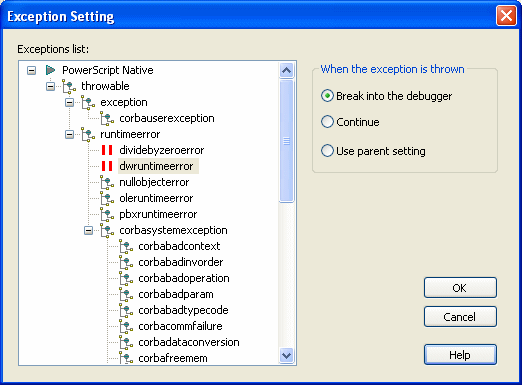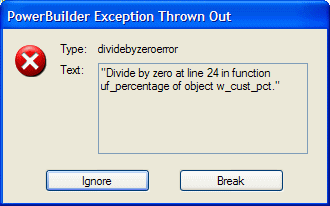When an application throws an exception while it is being debugged, the debugger sees the exception before the program has a chance to handle it.The debugger can allow the program to continue or it can handle the exception. This is usually referred to as the debugger’s first chance to handle the exception. If the debugger does not handle the exception, the program sees the exception. If the program does not handle the exception, the debugger gets a second chance to handle it.
You can control whether the debugger handles first chance exceptions in the Exception Setting dialog box. To open the dialog box, open the Debugger and select Exceptions from the Debug menu. By default, all exceptions inherit from their parent and all are set to Continue. In the following illustration, the DivideByZeroError and DWRuntimeError exceptions have been set to “Break into the debugger.”

When one of these exceptions is thrown, a dialog box displays so that you can choose whether to open the debugger (Break) or pass the exception to the program (Ignore).
